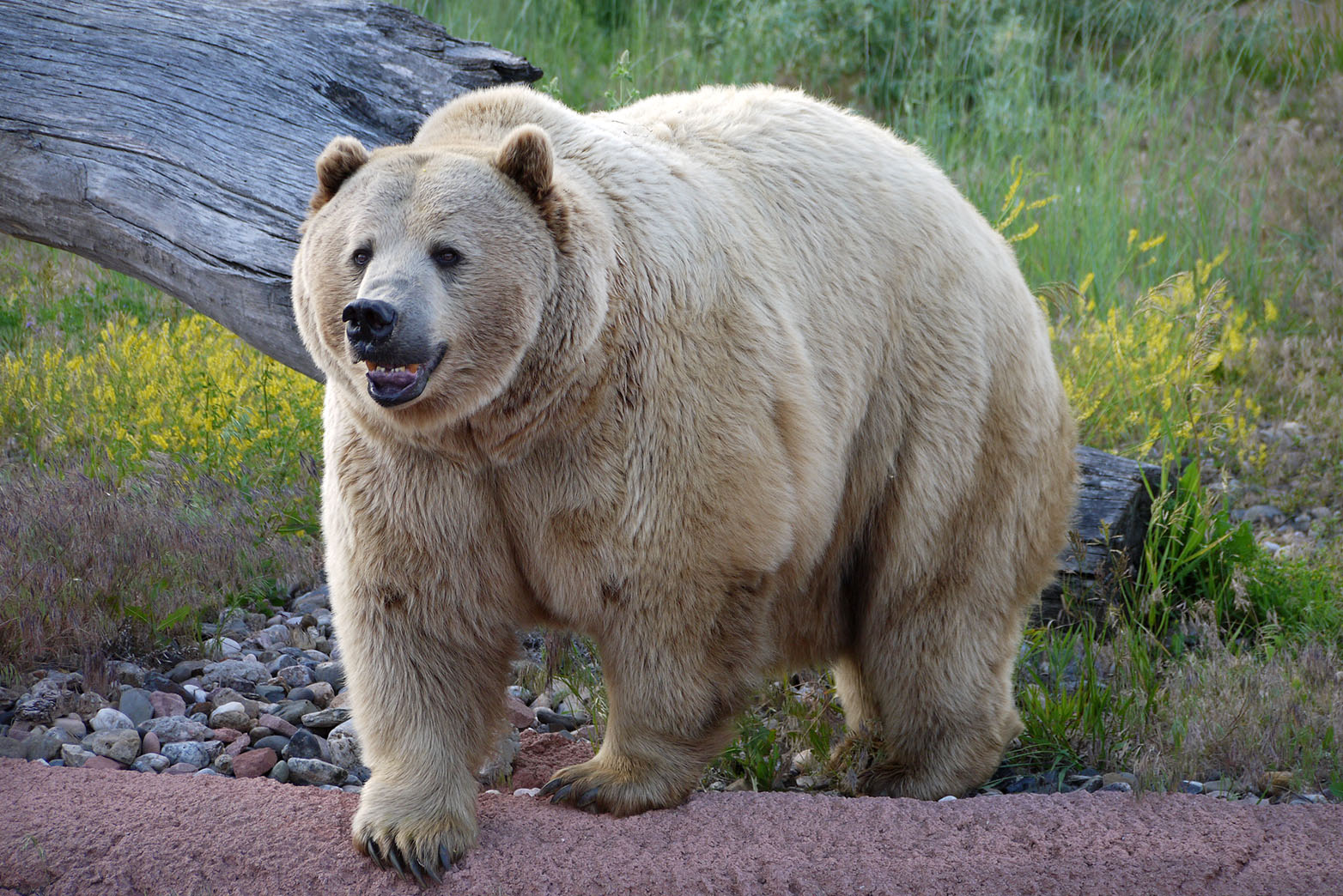
Photographer: Britt Andermann
Young species are more likely to go extinct than those which have existed for a long time. A new study published online this week by researchers from Sweden, Brazil and Switzerland found that the extinction risk in mammalian carnivores, a diverse group including wolves, bears and tigers, has been highest for species just after their origination.
Based on the study of thousands of fossils, the researchers discovered that the risk of extinction decreases with the age of species.
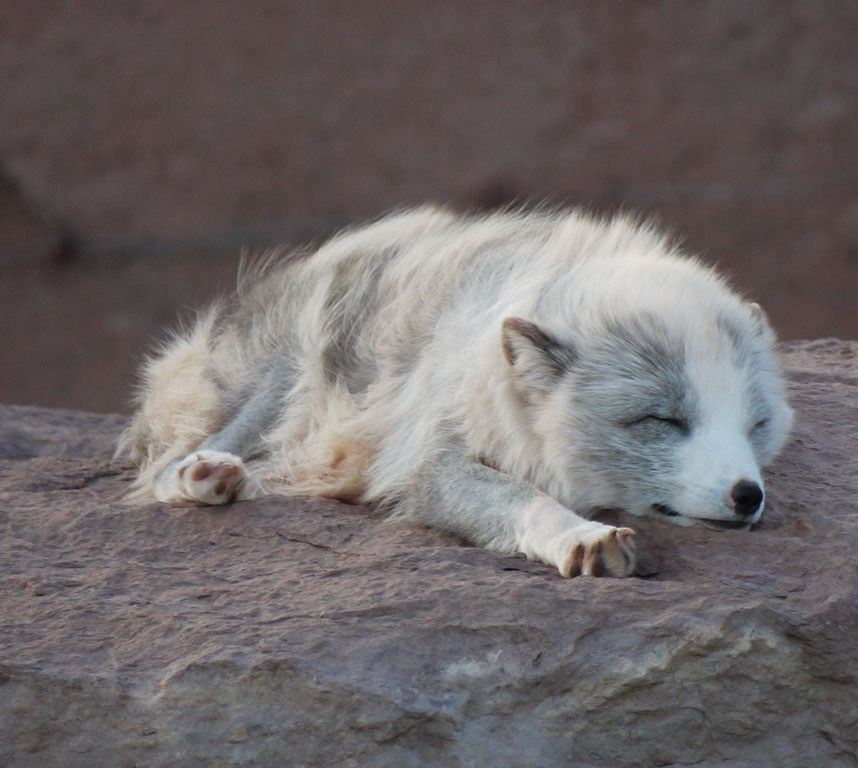 For instance, a species that survived 1 million years is 50% less likely to go extinct than a species that just originated. The average lifespan of carnivore species is about 2 million years, but for the last 40 million years most species have gone extinct much earlier, while a few survive for long periods of time e.g., more than 10 million years.
For instance, a species that survived 1 million years is 50% less likely to go extinct than a species that just originated. The average lifespan of carnivore species is about 2 million years, but for the last 40 million years most species have gone extinct much earlier, while a few survive for long periods of time e.g., more than 10 million years.
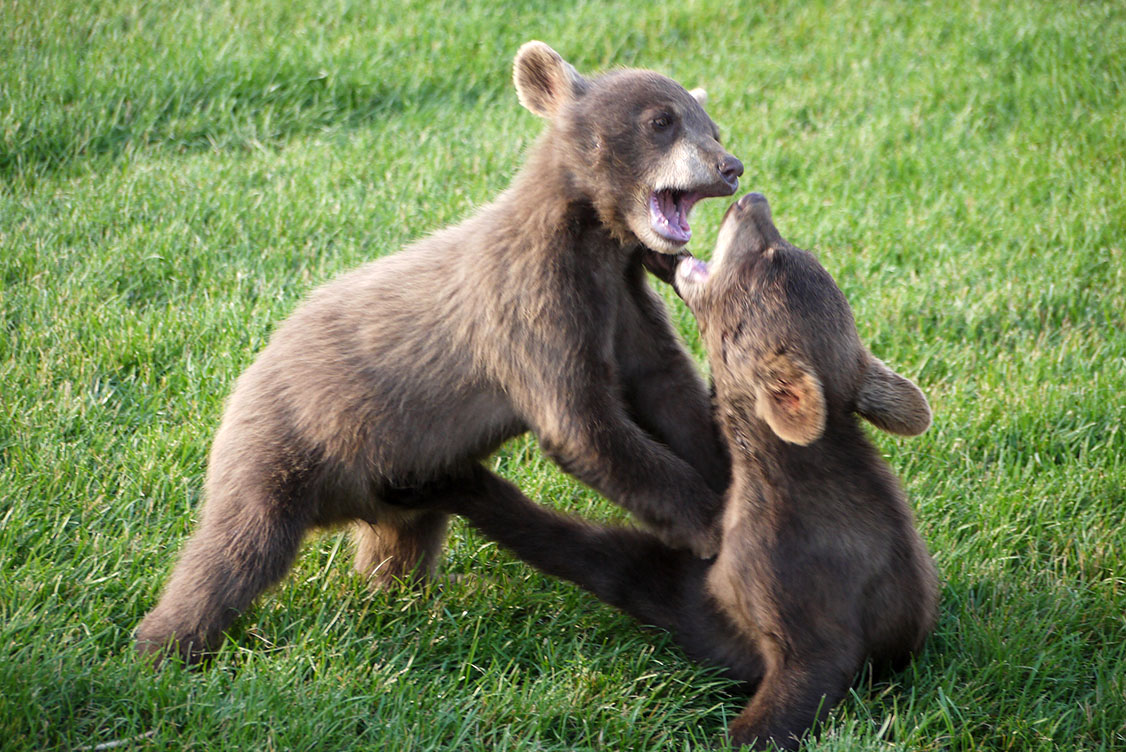 “The question of whether species ‘get old’ or not and whether their age increases or decreases their extinction risk has been debated for decades. If you look at an individual animal you would expect that an old cat has higher chances to die than a kitten. However, when you look at a species as a whole, the opposite is true” explains Oskar Hagen, leading author of the article.
“The question of whether species ‘get old’ or not and whether their age increases or decreases their extinction risk has been debated for decades. If you look at an individual animal you would expect that an old cat has higher chances to die than a kitten. However, when you look at a species as a whole, the opposite is true” explains Oskar Hagen, leading author of the article.
T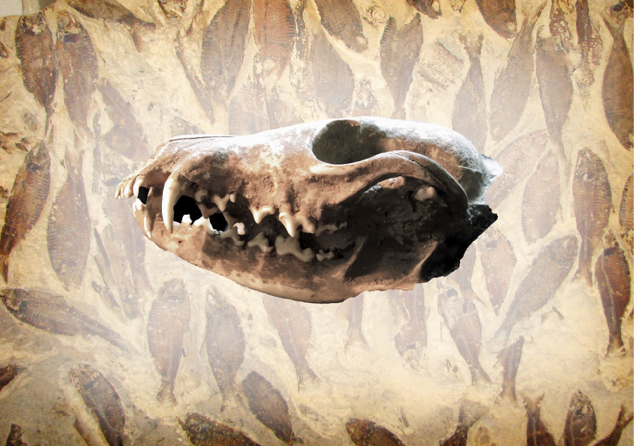 he research involved researchers from the Swiss Federal Institute of Technology in Zurich (ETH, Switzerland), the University of Gothenburg (Sweden), the Global Gothenburg Biodiversity Centre, and the University of Sao Paulo (Brazil). The results presented in the study are based on the analysis of more than 7000 fossils of mammalian carnivores and the development of new mathematical models.
he research involved researchers from the Swiss Federal Institute of Technology in Zurich (ETH, Switzerland), the University of Gothenburg (Sweden), the Global Gothenburg Biodiversity Centre, and the University of Sao Paulo (Brazil). The results presented in the study are based on the analysis of more than 7000 fossils of mammalian carnivores and the development of new mathematical models.
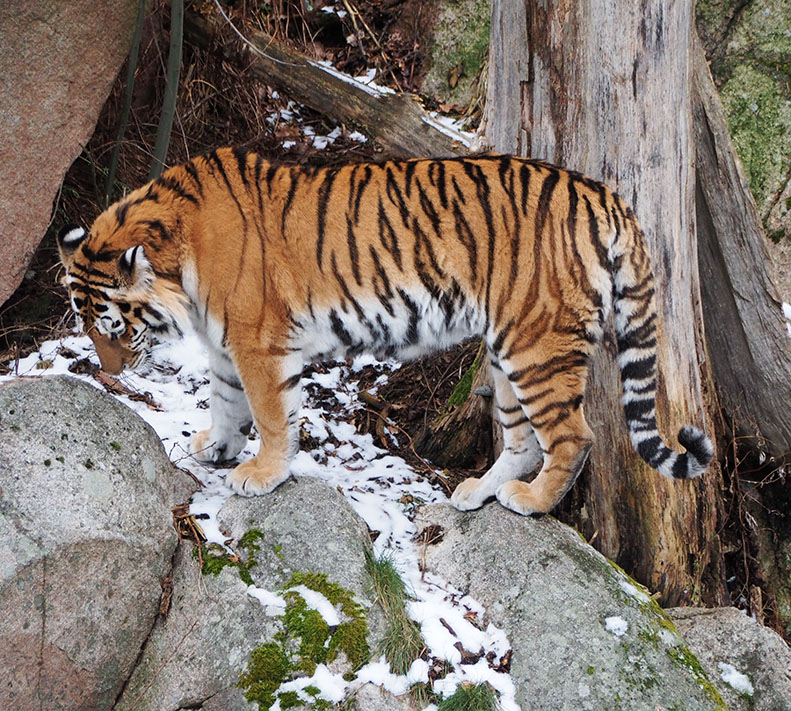 “Knowing how species age influences extinction risk can give us important insights into the past evolutionary history and help us predict the future of species. However, it is not clear to what extent the historical patterns of extinctions might be transferred to present-day extinction risk, which is also heavily influenced by human impact", says Daniele Silvestro.
“Knowing how species age influences extinction risk can give us important insights into the past evolutionary history and help us predict the future of species. However, it is not clear to what extent the historical patterns of extinctions might be transferred to present-day extinction risk, which is also heavily influenced by human impact", says Daniele Silvestro.
Details on the publication:
Hagen O, Anderman T, Quental TB, Antonelli A, Silvestro D: Estimating Age-dependent Extinction: Contrasting Evidence from Fossils and Phylogenies. Systematic Biology (2017).
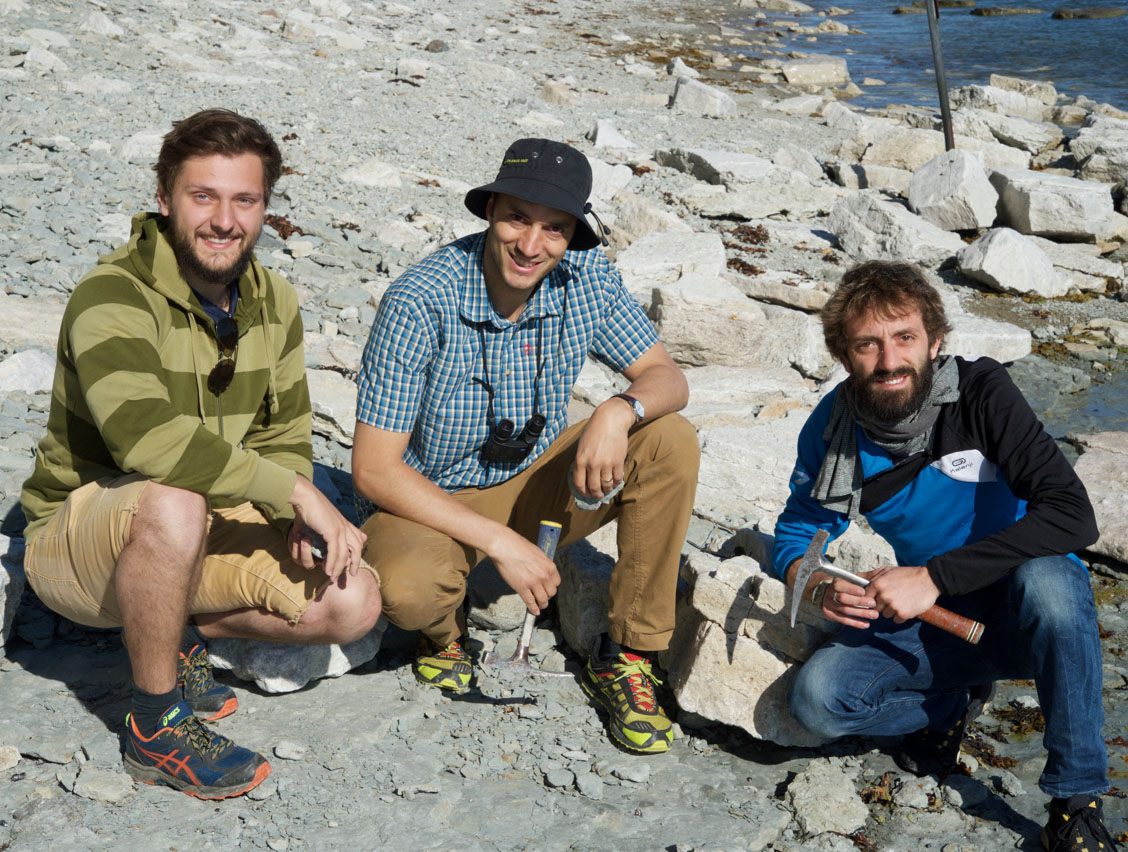 The full article is available free of charge at the following link: https://doi.org/10.1093/sysbio/syx082
The full article is available free of charge at the following link: https://doi.org/10.1093/sysbio/syx082
Contacts:
Daniele Silvestro, phone +41 764 909931, e-mail: daniele.silvestro@bioenv.gu.se (University of Gothenburg, Sweden).
Oskar Hagen, phone +41 44 632 23 45, e-mail: oskar.hagen@usys.ethz.ch (ETH Zürich, Switzerland)
Tiago Bosisio Quental, email: tbquental@usp.br (University of São Paulo, Brazil).
Alexandre Antonelli, phone +46 703 989570, e-mail: alexandre.antonelli@bioenv.gu.se (University of Gothenburg, Sweden)
Photo: Britt Andermann
Bbelow (from left): Tobias Andermann, Alexandre Antonelli and Daniele Silvestro

 For instance, a species that survived 1 million years is 50% less likely to go extinct than a species that just originated. The average lifespan of carnivore species is about 2 million years, but for the last 40 million years most species have gone extinct much earlier, while a few survive for long periods of time e.g., more than 10 million years.
For instance, a species that survived 1 million years is 50% less likely to go extinct than a species that just originated. The average lifespan of carnivore species is about 2 million years, but for the last 40 million years most species have gone extinct much earlier, while a few survive for long periods of time e.g., more than 10 million years. “The question of whether species ‘get old’ or not and whether their age increases or decreases their extinction risk has been debated for decades. If you look at an individual animal you would expect that an old cat has higher chances to die than a kitten. However, when you look at a species as a whole, the opposite is true” explains Oskar Hagen, leading author of the article.
“The question of whether species ‘get old’ or not and whether their age increases or decreases their extinction risk has been debated for decades. If you look at an individual animal you would expect that an old cat has higher chances to die than a kitten. However, when you look at a species as a whole, the opposite is true” explains Oskar Hagen, leading author of the article. he research involved researchers from the Swiss Federal Institute of Technology in Zurich (ETH, Switzerland), the University of Gothenburg (Sweden), the Global Gothenburg Biodiversity Centre, and the University of Sao Paulo (Brazil). The results presented in the study are based on the analysis of more than 7000 fossils of mammalian carnivores and the development of new mathematical models.
he research involved researchers from the Swiss Federal Institute of Technology in Zurich (ETH, Switzerland), the University of Gothenburg (Sweden), the Global Gothenburg Biodiversity Centre, and the University of Sao Paulo (Brazil). The results presented in the study are based on the analysis of more than 7000 fossils of mammalian carnivores and the development of new mathematical models. “Knowing how species age influences extinction risk can give us important insights into the past evolutionary history and help us predict the future of species. However, it is not clear to what extent the historical patterns of extinctions might be transferred to present-day extinction risk, which is also heavily influenced by human impact", says Daniele Silvestro.
“Knowing how species age influences extinction risk can give us important insights into the past evolutionary history and help us predict the future of species. However, it is not clear to what extent the historical patterns of extinctions might be transferred to present-day extinction risk, which is also heavily influenced by human impact", says Daniele Silvestro. The full article is available free of charge at the following link: https://doi.org/10.1093/sysbio/syx082
The full article is available free of charge at the following link: https://doi.org/10.1093/sysbio/syx082